What was the first turning point in the creative life of Lalithambika Antharjanam (1909–1987)? 'She used to love answering this question,' writes her granddaughter.
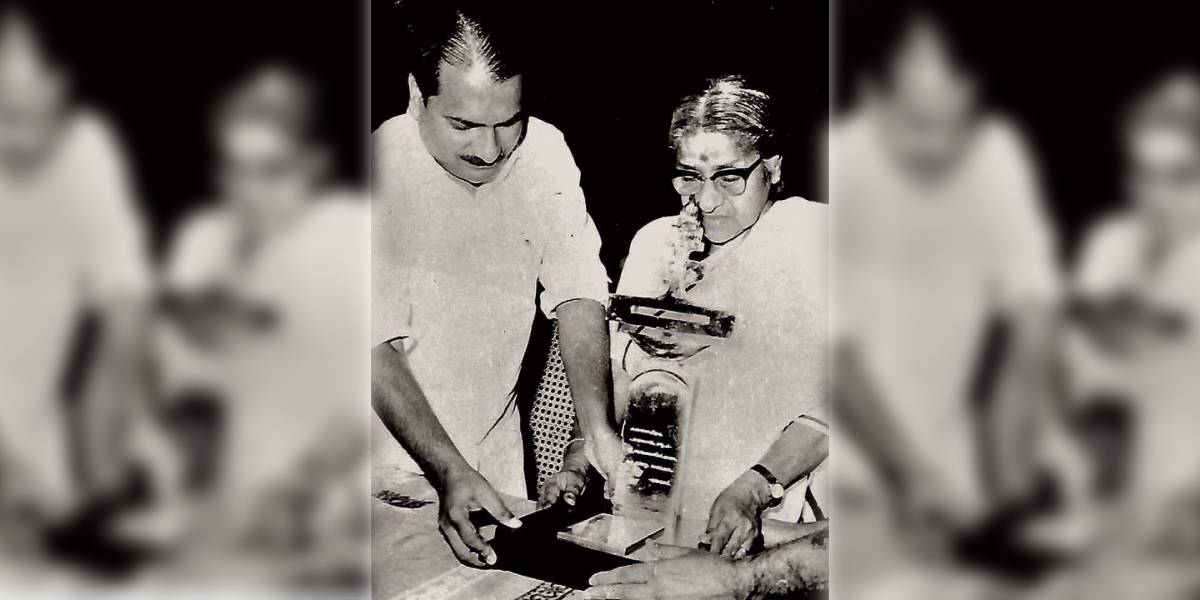
Lalithambika Antharjanam receives the first Vayalar Award in 1977 for her novel Agnisakshi, from the then chief minister A K Antony. The award is given every year to the best literary work in Malayalam (Sarita Mohanan Bhama)
“Woe be it to any woman who tries to step outside the house alone,” was the ominous mantra in the Brahmin community in Kerala, when Lalithambika Antharjanam was born in 1909. But then, young Lalithambika did take that unholy plunge.
Antharjanam is the caste name for women in Namboodiri households. It literally means one who stays indoors.
This also meant that Lalithambika Antharjanam’s eight younger siblings — all boys — could actively pursue their education in schools and colleges, but the girl could not.
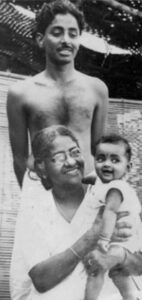
Lalithambika Antharjanam with her son and fiction writer N Mohanan, and holding her granddaughter Sarita Mohanan Bhama, the author of this piece (Sarita Mohanan Bhama)
Her father Kottavattam Thenkunnathu Madhom Damodaran Potty was a well-to-do landowner. He was abundantly progressive for his times. And yet, he was all fuming, in helplessness, when his firstborn turned out to be a girl.
My grandmother Lalithambika Antharjanam writes about the predicament of her parents in her autobiographical essay quoted in the collection, Cast me out, if you will (English translation by Gita Krishnankutty: New York: The Feminist Press: 1998).
“No, I’ll not live here any longer. I’ll go away, maybe to Madras, become a Christian and marry an English woman,” he shouted. “What if she has a daughter too?” asked his wife Arya, quietly. “At least, I’d be able to bring her up as a human being,” he retorted. “I’ll have the liberty to educate her, give her the freedom to grow and let her get married to a good man.”
One would think that being born in the top layer of the caste hierarchy was a privilege, but it was traumatic for a girl’s father, if he was progressive and egalitarian.
The Namboodiri caste lived by a rigid patriarchal code, secluding girls in the confines of the kitchen, setting pre-pubescent girls in marriage to grooms, even half a century older than them. At any murmur against this code, the family and the community would ostracise the woman who dared.
Lalithambika’s family lived in a secluded village in the hard-to-reach hilly terrains near Punalur town (South Kerala) and their homestead was, in those days, a hideout for freedom fighters (some in the Congress party, some who later joined the Communist movement).
The political and sociological questions debated in the veranda, by some of the torchbearers of Kerala’s renaissance, found reverberations in the mindscape of the child growing up in the inner courtyard.
Her mother Arya, only 15 years older than her, was her best friend.
A mother who secretly wrote poetry, read Tagore’s poems to her, nourishing her imagination. She discussed old clippings of Malayalam newspapers with the child, to the extent that at the age of four, Lalithambika was solemnly asking the Gandhian revolutionaries, who took refuge at her home, “Was it not too sad that the editor of Swadeshabhimani newspaper was banished?”
“My mother was so eaten up with anguish that her daughter, with her vibrant inner world, lived in an outer world, which banished even the thought of a woman of letters,” my grandmother Lalithambika told me.
Little did the mother realise then, that this girl, who could not go to school or college, would brave the social taboos and go on to emerge as a pan-Indian writer and social renaissance activist, later even winning a couple of Kendra Sahitya Akademi awards for her short stories, novel, and essays.
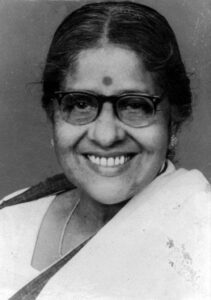
For her novel Agnisakshi, Lalithambika Antharjanam in 1977 won the first-ever Vayalar award, given each year to the best literary work in Malayalam (Sarita Mohanan Bhama)
Fiction was her forte. Lalithambika Antharjanam’s novel Agnisakshi (Witness, by fire), on one level, was about the turbulence of emotions between woman and man and the bonds of sisterhood, but it was also about how the tsunami of the nationalist movement swept through India in the 1930s.
At the age of 17, getting married to an educated young man pepped up her moral courage.
Her contagious idealism swept the groom Amanakara Narayanan Nampoothiri to jump into the wagon of the freedom movement himself. He had to drop out of his medical studies at Tiruchirapalli Medical College in Tamil Nadu to follow his newfound passion.
An Antharjanam was not allowed to wear a blouse, but Lalithambika committed the sin of spinning khadi cloth with her charka and wearing a blouse out of it.
To cap it all, in the 1930s, she set out to fulfil her dream of meeting Gandhi in person in this un-Antharjanam-like attire. The elders of her husband’s family, who were pro-British and anti-Gandhi, were hardly amused when their pen-wielding daughter-in-law dedicated most of her gold jewellery at the feet of Gandhi.
A long odyssey of resistance had begun. They had eight children, one after the other. Rocking the cradle with one hand in the late hours of the night, with the other hand, Lalithambika would write short stories for the journals of the day.
She actively went on to participate in platforms against oppressive government regimes and caste structures. Amidst the unannounced boycott from the extended family, there were livelihood issues.
Narayanan turned to active tilling in his piece of land holding. “Gradually, his spade grew muscles and so did my pen,” she wrote.
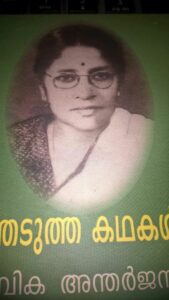
Photo of a young Lalithambika Antharjanam on the cover of the book Thiranjeduththa kadhakal (Select stories of Lalithambika Antharjanam) (Sarita Mohanan Bhama)
It is in the form of short stories that Lalithambika found the full punch of her boundless imagination and compassion.
The creative process, according to her, was something organic and akin to the process of transformation of a woman’s heart-blood to the pristine mother’s milk or to the red life-blood that pulsates the infant in the womb.
Perhaps, that was how, even without visiting the northern borders of India, this woman in Kerala could write stories like Dhirendu Majumdarinde Amma (Mother of Dhirendu Majumdar), Kodumkattilpetta Orila (A leaf in the whirlwind), and Amminjayude Manam (The scent of mother’s milk) on the tumultuous impact of the partition of Bengal and Punjab, from a female perspective.
By the time she breathed her last on 6 February 1987, at the age of 79, she had probably embraced every genre of literature, from poetry to Thiruvathirakali songs, plays to film scripts, and short stories to a full-fledged novel. And this, she had accomplished in a literary domain, which was largely a men’s club.
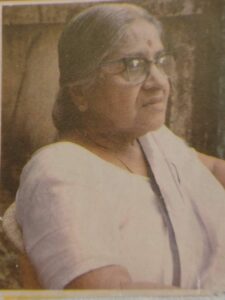
Her surname Antharjanam was the caste name for women in Namboodiri households, and literally means one who stays indoors (Sarita Mohanan Bhama)
What was the first turning point in Lalithambika Antharjanam’s creative life? “Probably, it was the moment that my father took me to meet Sree Narayana Guru, at the age of seven,” she would say. She used to love answering this question.
Sree Narayana Guru, who advocated the slogan “One caste, One religion, One God for all mankind”, was one of the most pragmatic renaissance thought-leaders of 20th century India.
While her father was engaged in serious discussion with this seer, the daughter had been playing around in the garden in the ashram.“I was trying to nestle that green parrot in the bush,” the child cooed to the Guru.
“Did you get to catch it?” he asked her indulgently.
“No, it flew away,” she rued.
“Oh then, you should sprout wings to catch up,” he suggested. No marks, indeed, for guessing what the metaphor of the flighty green parrot stands for.

Apr 23, 2024

Apr 23, 2024

Apr 23, 2024

Apr 23, 2024

Apr 22, 2024